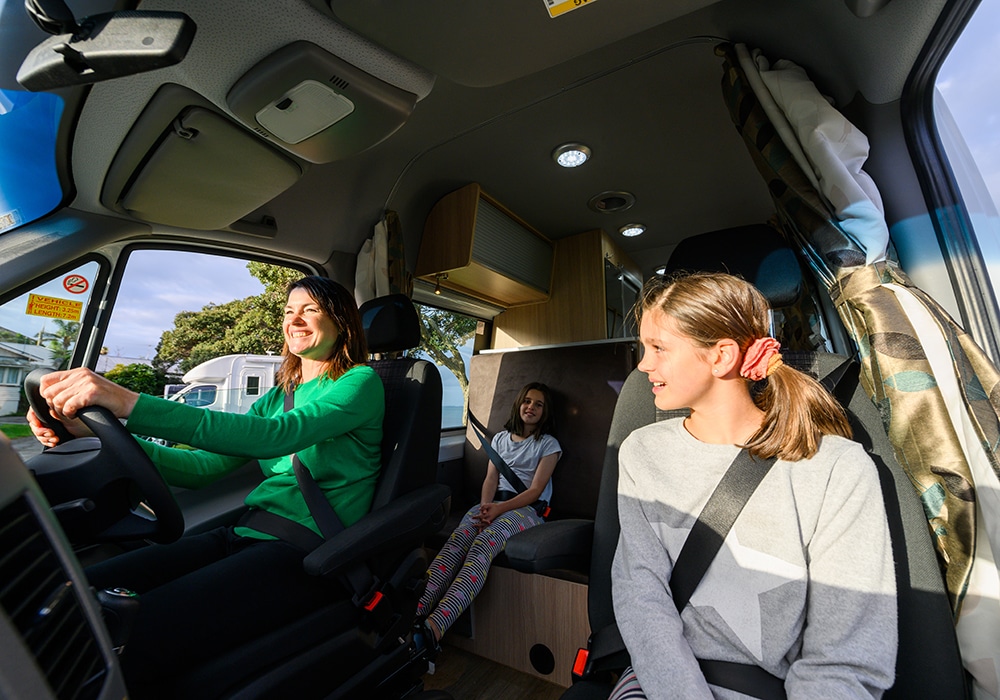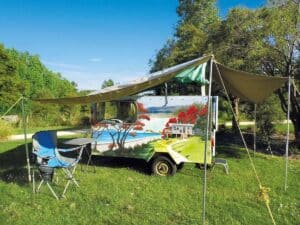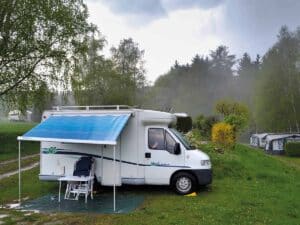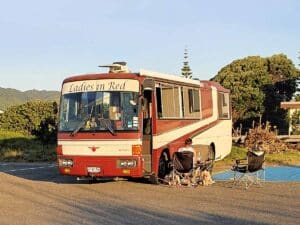Securing a seat belt is second nature for most of us, and the very first thing most of us do when we take a seat in a car or motorhome. And with good reason. The forces on seat belts can be up to 20 times your body weight. Without their restraint this is how hard you’d hit your vehicle interior.
ONE OF THE FIRST
New Zealand was an early adopter of fitting seat belts in motor vehicles. Three-point belts became compulsory in new cars registered from 1 January 1965. But it wasn’t compulsory to wear them. That came 10 years later, in 1975. If you didn’t buckle up and then got caught, the fine for first-time offenders was $8.
In 1979 new cars had to have belts for rear seats as well as the front, and wearing them was compulsory from 1989. Surprisingly, it wasn’t until 1 October 2003 that they became compulsory in newly built or converted motorhomes.
BELTS AND BERTHS
Since 2003, standards-compliant ‘travel’ seats have been required for the driver and all passengers. A typical four-berth motorhome has two travel seats up front, with two more in the rear seating positions. If the RV is a six-berth, it must have four rear travel seats. The manufacturer determines the number of berths, and the number of berths determines the required number of travel seats.
THE LEGALITIES
Three-point, dual-sensitive, retractor RV seat belts must be fitted to the driver’s seat and the outer front seat. The legal minimum for a middle front seat is a lap belt. Motorhome rear seats can face forwards, backwards or be mounted on a sidewall facing sideways. The minimum legal seat belt requirement for all rear seat configurations is a lap belt, although upgrading to diagonal belts is recommended as they offer greater protection.
Adding a diagonal RV seat belt doesn’t offer any benefits to sideways-facing occupants. In a collision the sideways-facing lap belt holds you in place, but it cannot resist sideways stresses. These can cause quite serious injury. A diagonal belt does not resist sideways stresses either, and can cause more harm to the head and neck. So sideways seats with lap-belts are legal, but they are not recommended.
ADVICE NOTICES
Some travel seats rotate to positions where the seat belt offers less protection. These seats should display a sign showing the direction the seat needs to face (the travel position) for the belt to be most effective.
A notice in the rear seating area of the RV should advise passengers that when travelling they must use seats fitted with seat belts, and that they must buckle up.

PROTECTING CHILDREN
If you’re travelling with children in a motorhome, they might ask, “Can I lie in the bed while we drive?” Sounds like fun, but of course, it’s a big no-no. Children need the same level of protection as in a car. It is the driver’s responsibility to properly restrain children under the age of seven with an approved restraint appropriate for the age and size of the child. Approved restraints include:
- baby capsules for infants
- car seats for older babies, toddlers and preschoolers
- booster seats for preschool and school-aged children
- harnesses (used with or without a booster seat) for preschool and school-aged children.
As any parent or grandparent will tell you, coming to grips with the intricacies of vehicle child restraints is quite a mission. For further advice see nzta.co.nz. Reputable retailers selling child restraint equipment are another valuable source of advice. If you pay them a visit, take your motorhome so they can check if and where the anchor points are in your vehicle.
PETS ON BOARD
Just like humans, animals get injured in motorhome mishaps. Rather than letting them roam free while the vehicle is under way, it’s advisable to restrain them with a specially designed harness, or place them in a securely anchored carrier.
Restraining animals while travelling protects the human passengers as well. In a collision, or just a sudden stop, an unrestrained animal could cause quite severe injury to people in the vehicle.
SAFETY FIRST
Seat belts save lives, but only if we wear them. Statistics show that up to 30 percent of motor vehicle accident victims who died on New Zealand roads weren’t wearing seat belts at the time. So buckle up before you drive off, and enjoy travelling, safely.






